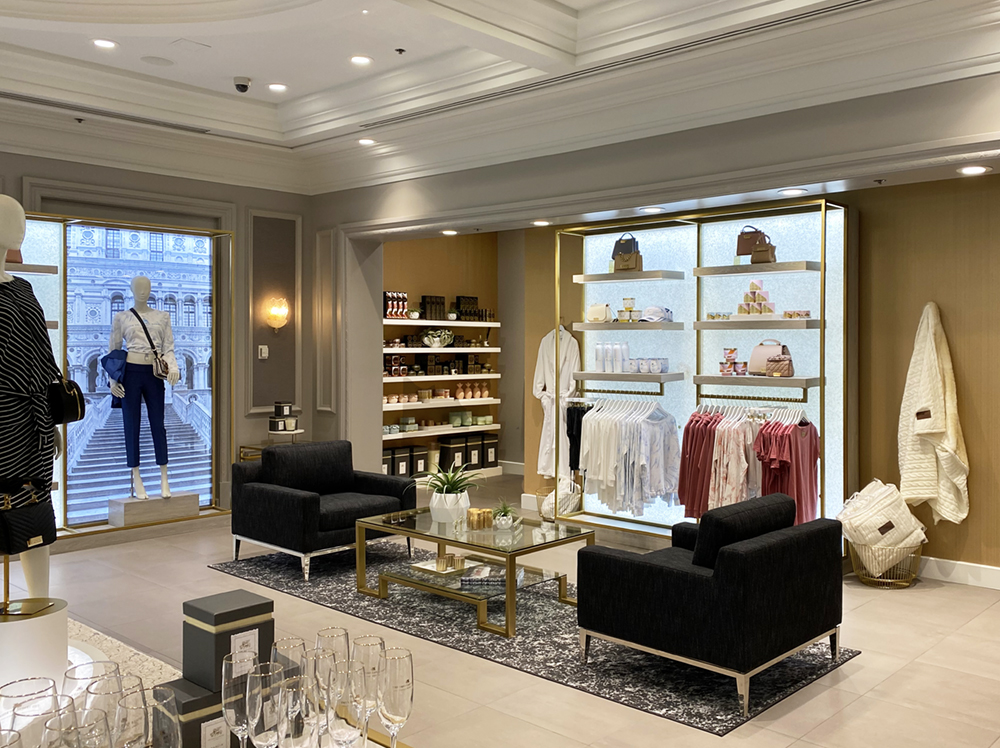Today, a business can largely determine its success by its commercial design. Successful store layout planning starts with identifying the main challenges and opportunities in a store. Successful planning also involves careful observation, careful analysis, and an ongoing evaluation of customer feedback. Business spaces that are designed around the customer generate higher profits. Conversely, poorly designed spaces can make shoppers feel uncomfortable and may even force them to leave without purchasing. Ultimately, a successful store layout depends on its ability to satisfy the needs of a wide variety of customers and help a store increase sales.
Factors to Consider During Planning
The inside of a store is one factor that dictates customers’ entire shopping experience. The way a store is laid out will transform how customers feel and act. When upgrading the layout of an existing shop, all the permanent elements and store furnishings should be considered so as not to confuse returning customers. However, restructuring an old store layout or assembling a new one is not something that should be done quickly and carelessly. A careful store setup will drive sales and brand recognition.
Visualization of Merchandise
Proper retail space planning can help increase sales and minimize the overall store layout. By knowing how much available space is for different categories of products, the store owner will be able to decide where to place each item. Merchandise should be positioned to get maximum exposure to the customer. Additionally, the merchandise should also be easily picked up by customers. Suppose a store owner fails to plan and execute retail space planning. In that case, there is a potential for loss instead of making a profit.
Customers Consideration
The store owner should decide if restructuring a new store layout would affect the convenience of customers. Permanent installations such as the checkout counter are essential and do not need to be adjusted. Other elements such as display cabinets can be moved to fit the plan. When changing the layout, be sure to plan the change during off-hours to minimize the impact on the customer experience. Foot traffic data, store’s peak hours, and zones for the best-selling items can also be crucial factors in optimizing the store layout and maximizing sale conversions.
Branding Matters
Retail space planning should be geared toward communicating targeted brand messaging. Since the store brand is the identifying mark of the business, the store layout and decoration must convey the brand’s principles, mission, and place in the community. The store brand will stand out from the competition with a proper store layout. Additionally, the store will build an extended and lasting relationship with customers. Once a stronger emotional connection has been established, customers are more likely to make a purchase.
Storage
Retail space planning should also incorporate off-site storage to minimize the risk of damage to merchandise. If the store accumulates too much inventory, finding storage for the excess will be challenging. Extra merchandise can be stored in stacked plastic boxes or in a nearby storage room. The goal is for the inventory to be accessible yet not be an inconvenience for the customers.
Leave It to the Professionals
A retail space planning job is more complex than structuring a residential space layout, as it involves a higher level of planning and coordination with construction professionals, owners, and service providers. When planning a store layout becomes too overwhelming, it is advisable to consult a commercial interior design firm that specializes in commercial designs of venues for various purposes. A commercial interior design firm should also be able to perform retail space planning. A commercial interior designer will plan a proper store layout structuring to ensure that the store’s layout matches consumer preferences and clients’ objectives.
Liaison with Necessary Personnel
A commercial interior design firm can be the liaison between the client and various consultants. Throughout the project, communication between the retail space planning designer and the client is maintained to ensure that everything proceeds smoothly and no problems arise. This includes obtaining necessary building permits and setting up contracts with contractors. Their goal is to create a visually appealing and functional environment while also maximizing profit potential. In addition, the commercial interior design firm will often work with the architect and project manager to create a layout that matches the client’s requirements and ensure that the final design follows the budget.
Suggesting the Right Furniture and Fixtures
It is essential to find suitable furnishings for the space. A good commercial interior design firm will analyze the planograms of existing stores and optimize them for optimal profitability. The commercial interior design firm would also help clients realize their dreams and make the store layout space more functional and comfortable. Good furniture always satisfies the customer. It helps in providing a comfortable environment along with a good ambiance. It also adds value to the personality of the owner. So, furniture plays a vital role in the well-being of the customer. Ultimately, the goal is to satisfy the client’s needs without compromising the aesthetics.
Aim to Drive More Sale
Setting up the layout of a store is a complex process with a wide range of considerations. The retail space planning has to include consideration from the moment customers walk in the door walking in the store until they have made a purchase. A store’s layout and design should be cohesive, simple, efficient, and easy to understand. A cluttered or cramped space will make customers uncomfortable and may even discourage them from buying something. Ultimately, the retail space structure should steer the shopper to purchase your products. With the help of a commercial interior design firm in Last Vegas, retail space planning and execution can run smoother and more efficiently.

